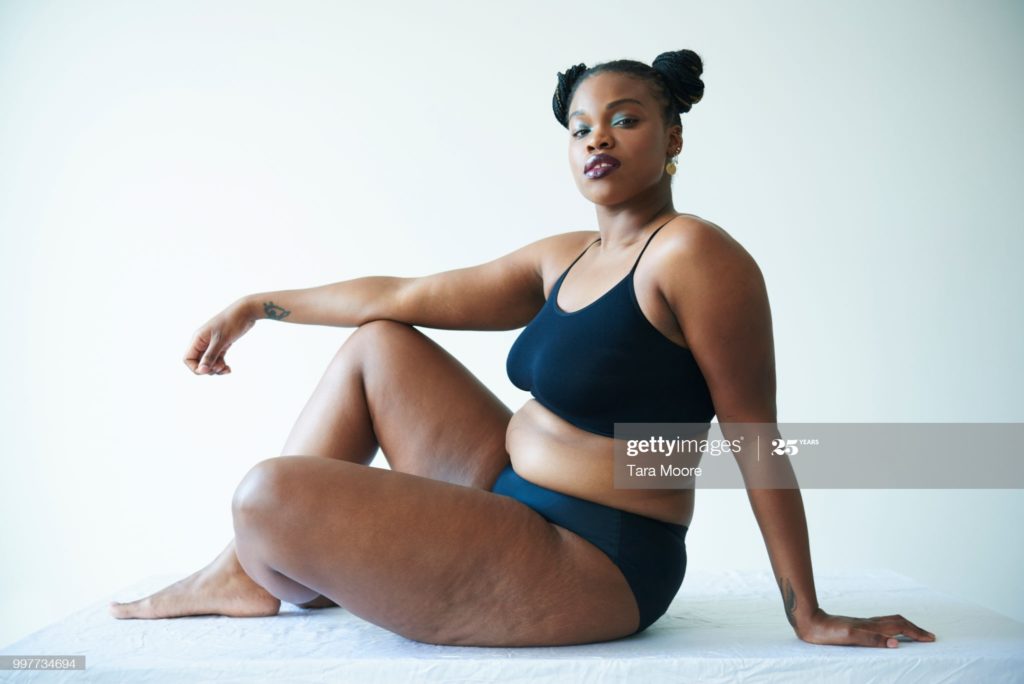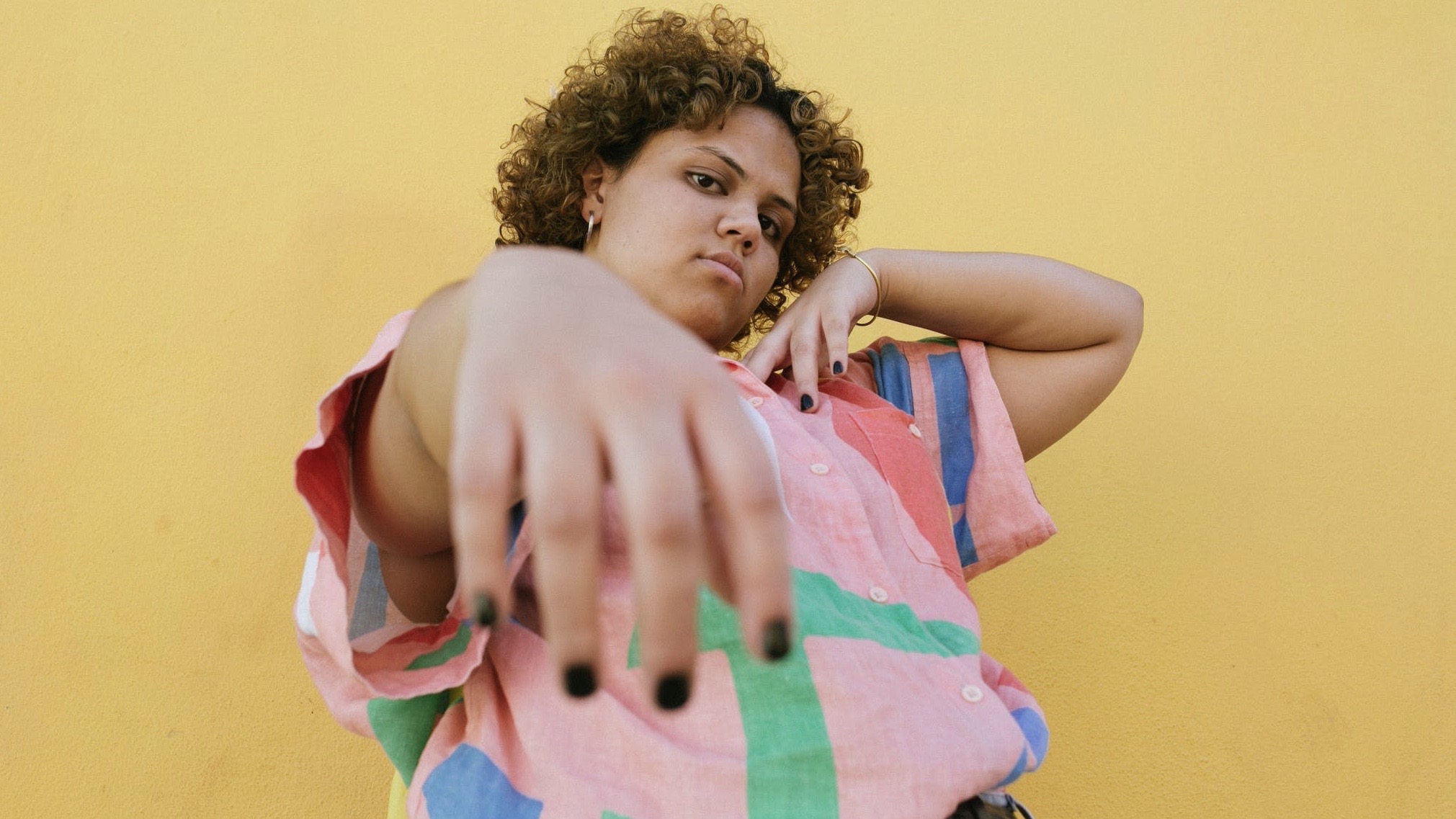Calvin Klein’s latest underwear model – a black plus-sized transgender woman – has promoted great social attention. Is it a cynical marketing trick or does it show the real change of the value in the fashion industry?
Tara Moore felt out of place when the whole black LGBTQ+ community was celebrating a massive stunning billboard of Jari Jones— the first black transgender model in Calvin Klein’s history, replacing the brand’s traditional skinny silhouettes in downtown Manhattan.
Compared with Jari’s celebration of popping champagne, Tara Moore, the 26-year-old plus-size black model, curled up on the couch tossing and turning to wait for a call from her modelling agency.
This is the second month Tara has no work to do as a result of the COVID-19 pandemic. If things go on like that, she will soon be out of money to cover her essential needs living in London.

“The modelling industry is not as glamorous as I thought before. We actually couldn’t t see enough black models, and we definitely couldn’t see enough black plus-size models. We confront issues in the workplace from imbalanced wages to racial inequality. As the coronavirus crisis has outbroken, the situation became worse,” says Tara.
Tara is one of the thousands experiencing economic stress in the modelling industry during the COVID-19 crisis. According to Model Alliance‘s survey of 212 working models in April 2020, models of colour and larger sizes were more likely to say they couldn’t afford essential needs if they could not work during the next three months.
Plus-size models of colour are treated differently in the industry and the body positivity movements, according to Nyome, the black plus-size model from Contact agency in London. “I took part in an advert and became friends with one of the actresses on the set and we started talking about pay, and I found out I got two grand less than everyone else,” says Nyome, one of the main models in that advert participated the whole shooting process.
It is not a rare thing for Nyome that black plus-size models are ignored in the industry. When she took a magazine shooting interview, they asked her to talk about body confidence and how naked bodies are a trending thing. However, in the final published version of the interview, Nyome’s photos disappeared. “They felt that it wasn’t important to include my photos, and everyone’s photo that they included were white women. If you’re going to do an article about my experience, why is my body not as important to put in?”
Although the plus-size fashion industry still has inequality issues and body-type prejudice, it is undeniable that the industry has developed rapidly in recent years.
According to the statistics from Price Waterhouse Coopers, the UK’s plus-size market is expected to be worth more than £9 billion by 2022. Meanwhile, an increasing number of high-street brands, online retailers, or even luxury fashion designers started to extend their garments’ sizes. For example, Dolce & Gabbana and the e-commerce sites 11 Honoré began to embrace designer fashion in sizes 20 and up.
The editor-in-chief of Fashionista Tyler McCall reveals the reason behind the thriving of the plus-size market. Tyler says, “Extending sizes isn’t as simple as scaling up existing patterns. Producing larger sizes often stands for increasing production costs, employing new-size models, designing more fitted patterns and consuming more fabric, but with the growing proportion of obese people in the UK, plus-size clothing was in demand more than ever and became progressively lucrative.”
The booming of the UK’s plus-size market provided plenty of opportunities for plus-size models. From Tyler’s perspective, the fashion brands’ interests do not conflict with the real shift of body diversity in the fashion industry. “Benefits and value changes coexist through the process. The brand wouldn’t have risked themselves in this way if they didn’t really believe in the message they were promoting. It’s a global shift towards inclusivity,” says Tyler.
The gradually frequent presence and campaigns of plus-size models in the industry gradually reconstructed the standardized beauty. When Ashley Graham became the first plus-size model in Grace Vogue cover, Tess Holliday, the 22-size model, endorsed Monif Clarke’s swimwear line, and famous lingerie brands Calvin Klein or even Victoria’s Secret started hiring models over size 14, it’s obvious to detect that attitudes and ideals are changing. “When it comes to plus size, particularly with modelling, I think things are really shifting. Models or even ordinary women of various sizes appear in social media and mainstream media wearing whatever they want to, is kind of changing the scope of how certain brands pick plus-size models to promote their products,” says Tyler.
However, for many jobbing plus-size models, the despotic requirements still exist. “Fashion is trying to progress but it’s doing it in a way that it’s so ingenuine. One minute they’re all about respecting like all body types, in the next minute it’s just like you don’t make clothes for all body types,” says the black plus-size model Tara Moore.
Many brands are invisibly required a specific type of models—an hourglass shape with a flat stomach, a peachy bum, big round breasts, and a relatively exquisite face with high cheekbones and an even jawline. “When I saw a model wearing body padding to make her bums and hip look bigger, I felt shocked,” says Tara. “There are some standardized requirements of waist-to-hip ratio in plus-size modelling. You should always be ‘perfect curves’ to fit in the industry. And we only supposed to be bigger in certain places. Clients will be dissatisfied if my arms or belly are too fat or my bum and breast are too small.”
According to Clémentine Desseaux, the model, activist, and founder of the All Womxn Project, modelling is an extremely exclusive industry. She organized the project by inspiring women to raise their awareness and advocate for diversity and representation in media through creative advocacy campaigns and collaborative art projects. When talking about why she set up this campaign, she pointed out that models, no matter in what sizes, can feel powerless regarding how they are portrayed and viewed. The project encourages women in modelling, fashion, and other fields to gather together to dismantle systems of oppression and uplift people’s voices in plus-size communities.

Models over the size 20 are more likely to receive clothes from brands to let them model on Instagram or social media platforms, rather than hiring them for paid campaigns. “Even for Jari Jones is not the long-term employed model in Calvin Klein’s. She is just one of the latest faces of Calvin Klein’s 2020 Pride campaign. Fashion brands advocate diversity, but it’s often tokenistic,” says Desseaux to YOU Magazine.
Disclosing the behind-the-scenes reality in the fashion industry, people in the fashion industry still discussed the real purpose of modelling. “For a long time, models have actually provided a kind of fantasy for customers rather than reflected what the products really look like,” says Simone Charles, the black plus-size model and social influencer in London. “However, for now, I believe our job is to show how fashion looks on different bodies and to encourage women to feel confident in their body through the medium of fashion and celebrate the body they have.”
As a plus-size lingerie model, Simone says her job is no longer attracting men and exhibiting desire and sex but providing accurate reflections for women in different sizes and ages, showing the real body. However, plus-size modelling is still a controversial issue for the public. “The modelling industry has always been controlled under the ‘male gaze’, even for now I still experienced some sort of online trolling to attack my body and blame me on glorifying obesity,” says Simone.

The debate around whether plus-size modelling would promote obesity and unhealthy lifestyle has never stopped. Simone says, “We are not celebrating obesity. We just want people to realize there are a bunch of women in the world who are not perfect to hit the mainstream beauty but can still find the stylized cloth and suitable underwear to represent themselves and gain confidence.”
Besides, Simone also believed that people could never tell others’ health condition by judging their body types. She says: “Many weightlifters, bodybuilders, rugby players, etc. are super healthy and fit but would be considered ‘plus-size’ because of their size, so the argument is invalid. You would need to look at someone’s lifestyle to determine whether they are healthy or not – things are not always as they seem!”
Being a plus-size model is precarious. It’s a job that exhibits real beauty but needs to challenge all the stereotype and facing equalities and prejudice. Plus-size models like Tara Moore are still fighting for their right to be represented and spaces to be seen. They may be more eager to tear off the “plus-size” label, be just “models”, and be featured on catwalks with their confidence and charming curves.
